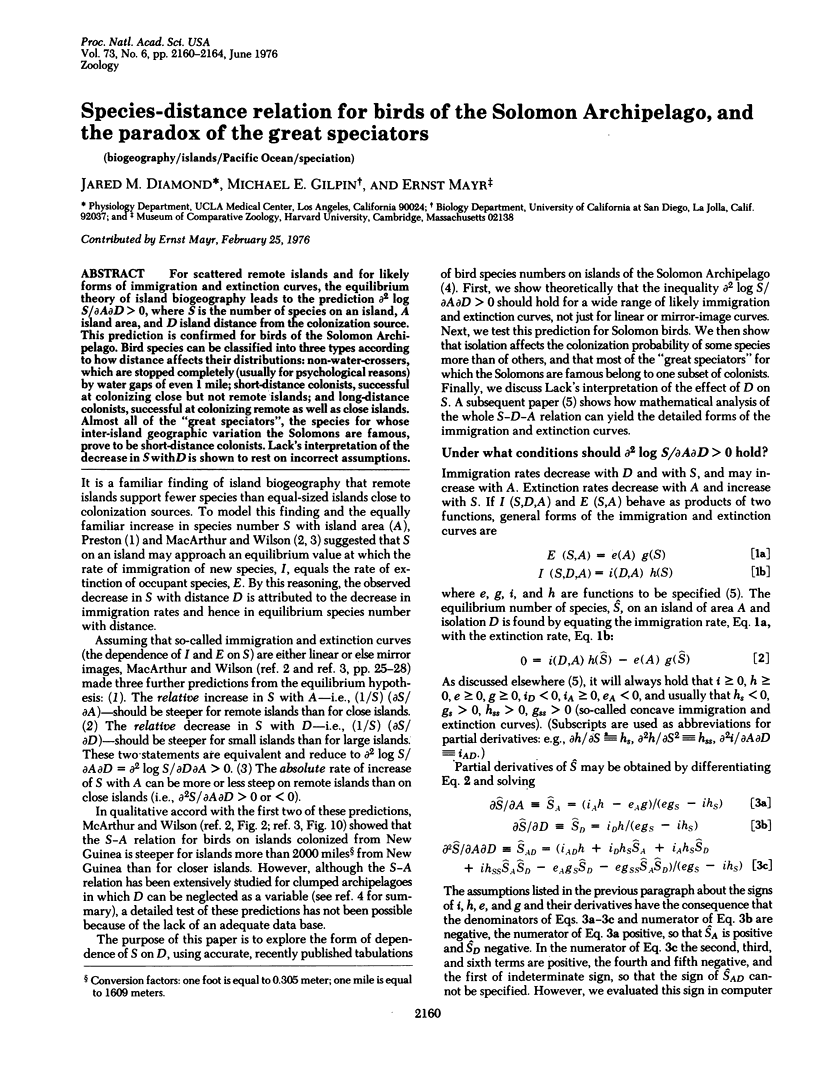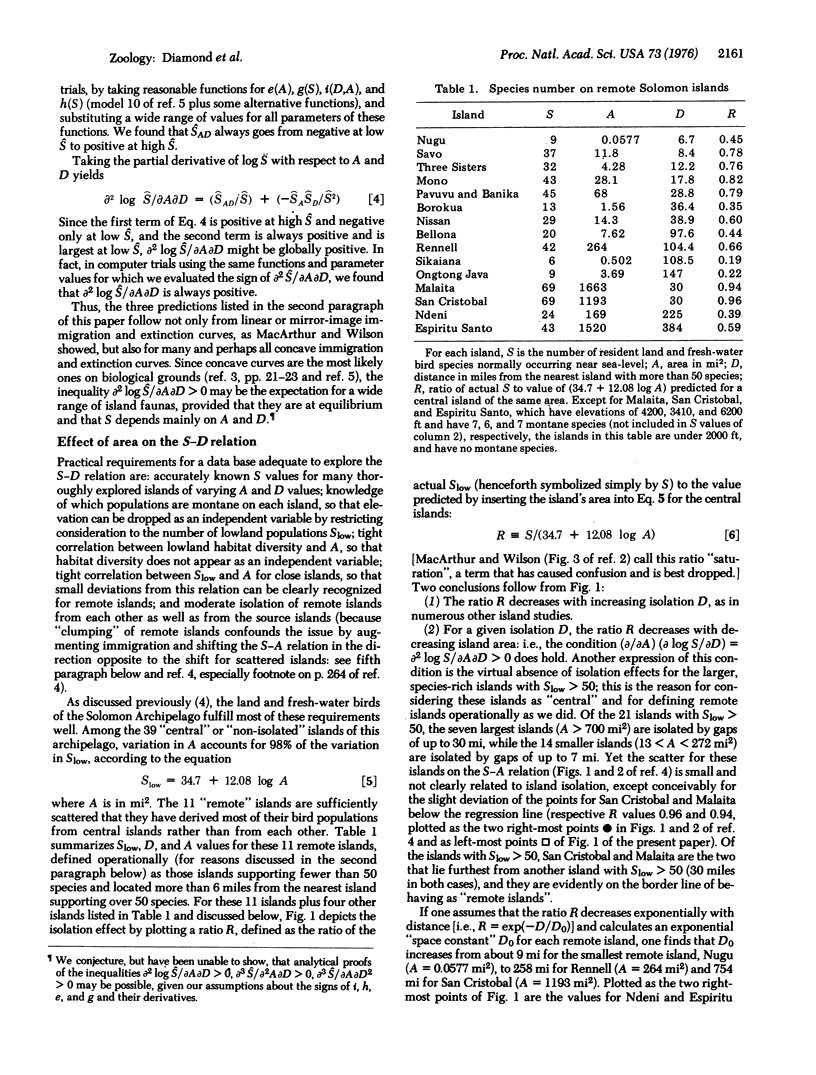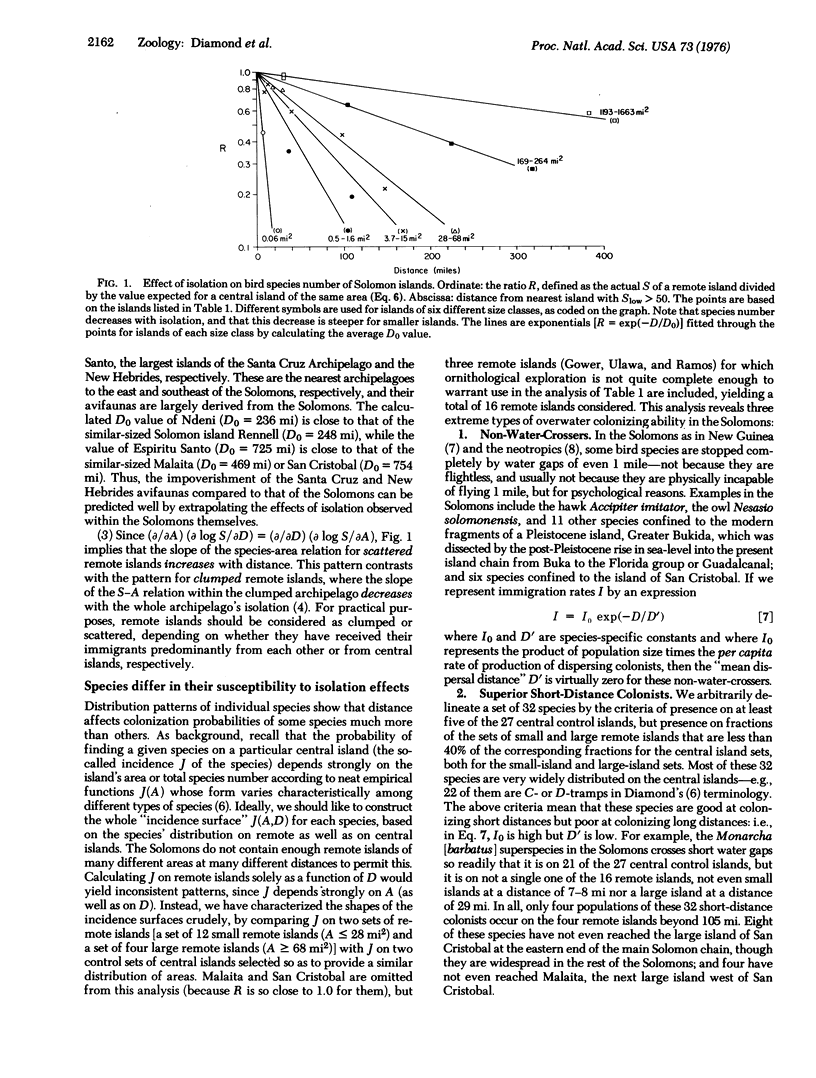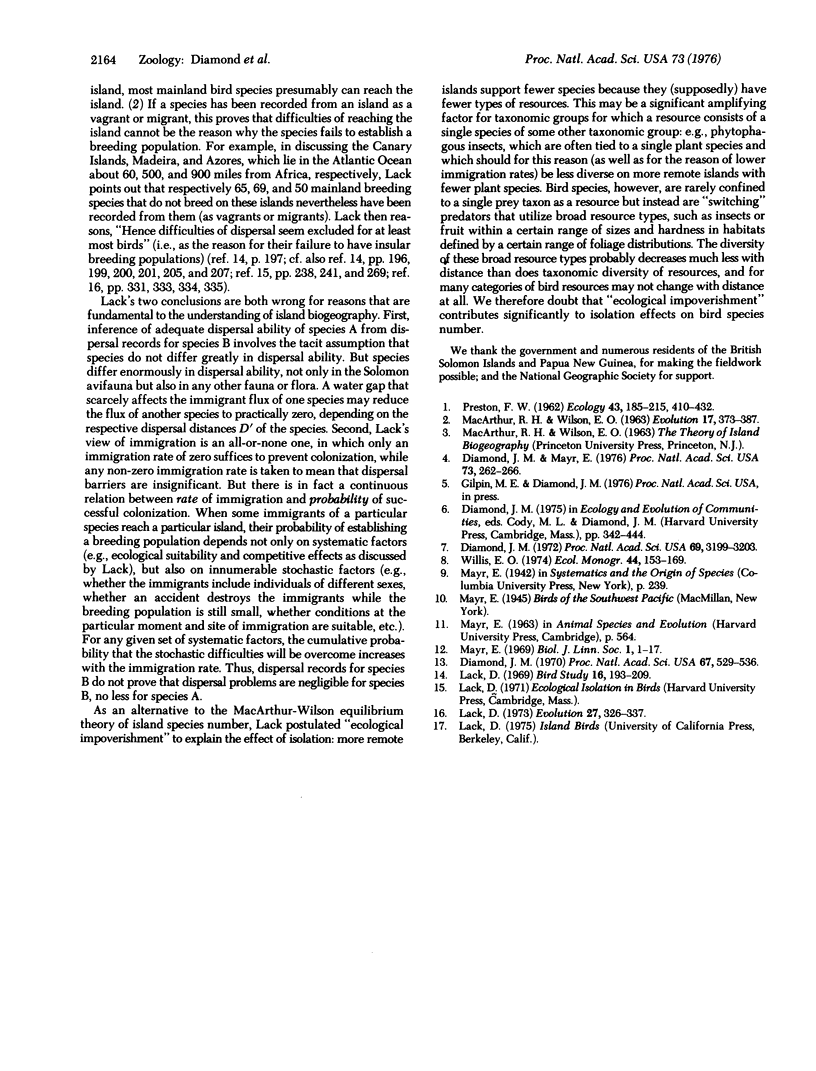Abstract
For scattered remote islands and for likely forms of immigration and extinction curves, the equilibrium theory of island biogeography leads to the prediction [unk]2 log S/[unk]A[unk]D > 0, where S is the number of species on an island, A island area, and D island distance from the colonization source. This prediction is confirmed for birds of the Solomon Archipelago. Bird species can be classified into three types according to how distance affects their distributions: non-water-crossers, which are stopped completely (usually for psychological reasons) by water gaps of even 1 mile; short-distance colonists, successful at colonizing close but not remote islands; and long-distance colonists, successful at colonizing remote as well as close islands. Almost all of the “great speciators”, the species for whose inter-island geographic variation the Solomons are famous, prove to be short-distance colonists. Lack's interpretation of the decrease in S with D is shown to rest on incorrect assumptions.
Keywords: biogeography, islands, Pacific Ocean, speciation
Full text
PDF




Selected References
These references are in PubMed. This may not be the complete list of references from this article.
- Diamond J. M. Biogeographic kinetics: estimation of relaxation times for avifaunas of southwest pacific islands. Proc Natl Acad Sci U S A. 1972 Nov;69(11):3199–3203. doi: 10.1073/pnas.69.11.3199. [DOI] [PMC free article] [PubMed] [Google Scholar]
- Diamond J. M. Ecological consequences of island colonization by southwest pacific birds, I. Types of niche shifts. Proc Natl Acad Sci U S A. 1970 Oct;67(2):529–536. doi: 10.1073/pnas.67.2.529. [DOI] [PMC free article] [PubMed] [Google Scholar]
- Diamond J. M., Mayr E. Species-area relation for birds of the Solomon Archipelago. Proc Natl Acad Sci U S A. 1976 Jan;73(1):262–266. doi: 10.1073/pnas.73.1.262. [DOI] [PMC free article] [PubMed] [Google Scholar]


